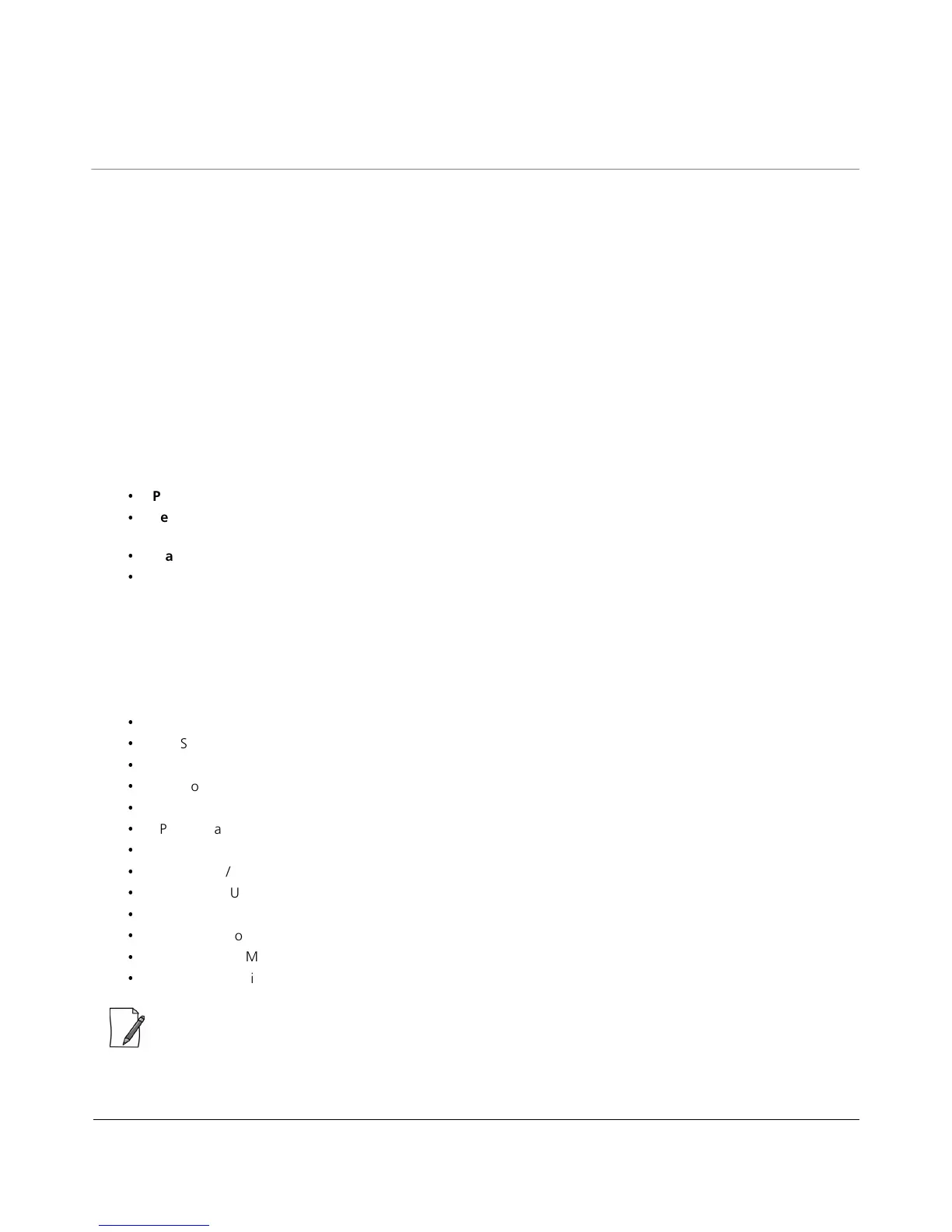Tsunami
®
800 & 8000 Series - Software Management Guide 129
5.6 Quality of Service (QoS)
The Quality of Service (QoS) feature is based on the 802.16 standard and defines the classes, service flows, and packet
identification rules for specific types of traffic. QoS guarantees a reliable and adequate transmission quality for all types of
traffic under conditions of high congestion and bandwidth over-subscription.
There are already several pre-defined QoS classes, SFCs and PIRs available that you may choose from which cover the most
common types of traffic. If you want to configure something else, you start building the hierarchy of a QoS classes by adding
or using existing PIRs and SFCs; you define the QoS class by associating those PIRs to relevant SFCs with priorities to each PIR
within each SFC. QoS can be applied on standard 802.3 frames and to Ethernet frames as well as to PPPoE encapsulated
frames.
5.6.1 QoS Concepts and Definitions
QoS feature is applicable on both BSU/End Point A and SU/End Point B, but is configurable only on BSU/End Point A. When
configured on BSU/End Point A, the QoS parameters is populated to all the registered SUs/End Point Bs and allows them to
use the QoS configuration, as soon as they are connected to the BSU/ End Point A.
You can create, edit, and delete classes of service that are specified below in the following hierarchy of parameters:
·
Packet Identification Rule (PIR) – up to 64 rules, including 18 predefined rules
·
Service Flow class (SFC) – up to 32 SFCs, including 8 predefined SFCs; up to 8 out of maximum 64 PIRs may be
associated per SFC
·
Class List - Priority for each rule within each QoS class – 0 to 255, with 0 being lowest priority
·
QoS class – up to 8 QoS classes, including 5 predefined classes; up to 8 out of maximum 32 SFCs may be associated
per QoS class
5.6.1.1 Packet Identification Rule (PIR)
A Packet Identification Rule is a combination of parameters that specifies what type of traffic is allowed or not allowed. You
can create a maximum of 64 different PIRs, including 18 predefined PIRs. Also, you can create, edit, and delete PIRs that
contain none, one, or more of the following classification fields:
·
Rule Name
·
IP ToS (Layer 3 QoS identification)
·
802.1p tag (layer 2 QoS identification)
·
IP Protocol List containing up to 4 IP protocols
·
VLAN ID
·
PPPoE Encapsulation
·
Ether Type (Ethernet Protocol identification)
·
Up to 4 TCP/UDP Source port ranges
·
Up to 4 TCP/UDP Destination port ranges
·
Up to 4 pairs of Source IP address + Mask
·
Up to 4 pairs of Destination IP address + Mask
·
Up to 4 source MAC addresses + Mask
·
Up to 4 destination MAC addresses + Mask
: IP Address, TCP/UDP Port, MAC Address need to be configured separately and associate those classification in PIR
details if required.

